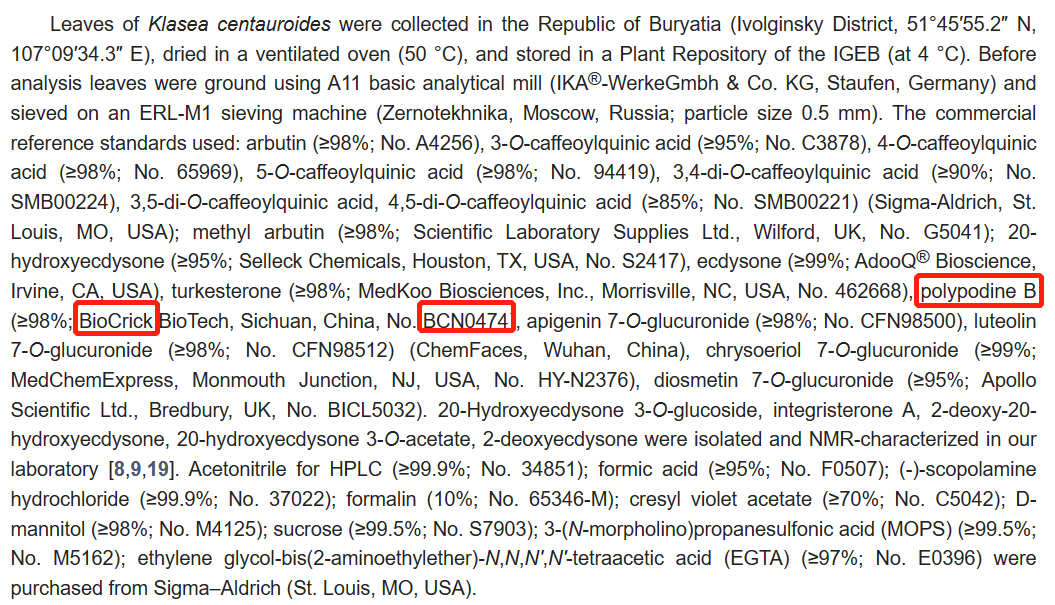Chemical Constituents, Neuroprotective and Antioxidant Potential of Klasea centauroides Leaves
Appl. Sci. 2023, 13(2), 860
 Owing to progressive aging in the population, there is an increase in patients with cognitive impairment. For the prevention of dementia, the use of plant remedies is relevant. Of particular interest is Klasea centauroides (L.) Cass. (Serratula centauroides L., Asteraceae), which has significant natural reserves, contains a wide range of biologically active substances, and is used in folk medicine to treat nervous system diseases. This study aimed to estimate the neuroprotective, energy-protective, and antioxidant effects of K. centauroides extract in cholinergic deficiency caused by long-term scopolamine administration. It has been established that K. centauroides extract accelerates passive avoidance-conditioned reflex development and ensures its preservation over a longer time period under cholinergic deficiency conditions. The K. centauroides extract increases the resistance of brain tissues to the toxic effects of scopolamine, reducing the number of neuron regressive forms in the cerebral cortex and hippocampus. The K. centauroides extract enhances the predominance of aerobic glycolysis over anaerobic glycolysis and enhances the NADH-dehydrogenase and succinate-dehydrogenase complexes activity, thus promoting more intensive ATP synthesis against this background, the introduction of scopolamine. The use of K. centauroides extracts reduces the malonic dialdehyde (MDA) content in the brain structures and increases the catalase (CAT) and antioxidant system glutathione unit activities.
Owing to progressive aging in the population, there is an increase in patients with cognitive impairment. For the prevention of dementia, the use of plant remedies is relevant. Of particular interest is Klasea centauroides (L.) Cass. (Serratula centauroides L., Asteraceae), which has significant natural reserves, contains a wide range of biologically active substances, and is used in folk medicine to treat nervous system diseases. This study aimed to estimate the neuroprotective, energy-protective, and antioxidant effects of K. centauroides extract in cholinergic deficiency caused by long-term scopolamine administration. It has been established that K. centauroides extract accelerates passive avoidance-conditioned reflex development and ensures its preservation over a longer time period under cholinergic deficiency conditions. The K. centauroides extract increases the resistance of brain tissues to the toxic effects of scopolamine, reducing the number of neuron regressive forms in the cerebral cortex and hippocampus. The K. centauroides extract enhances the predominance of aerobic glycolysis over anaerobic glycolysis and enhances the NADH-dehydrogenase and succinate-dehydrogenase complexes activity, thus promoting more intensive ATP synthesis against this background, the introduction of scopolamine. The use of K. centauroides extracts reduces the malonic dialdehyde (MDA) content in the brain structures and increases the catalase (CAT) and antioxidant system glutathione unit activities.
- Polypodine B 20,22-acetonide
Catalog No.:BCN0474
CAS No.:159858-85-2


